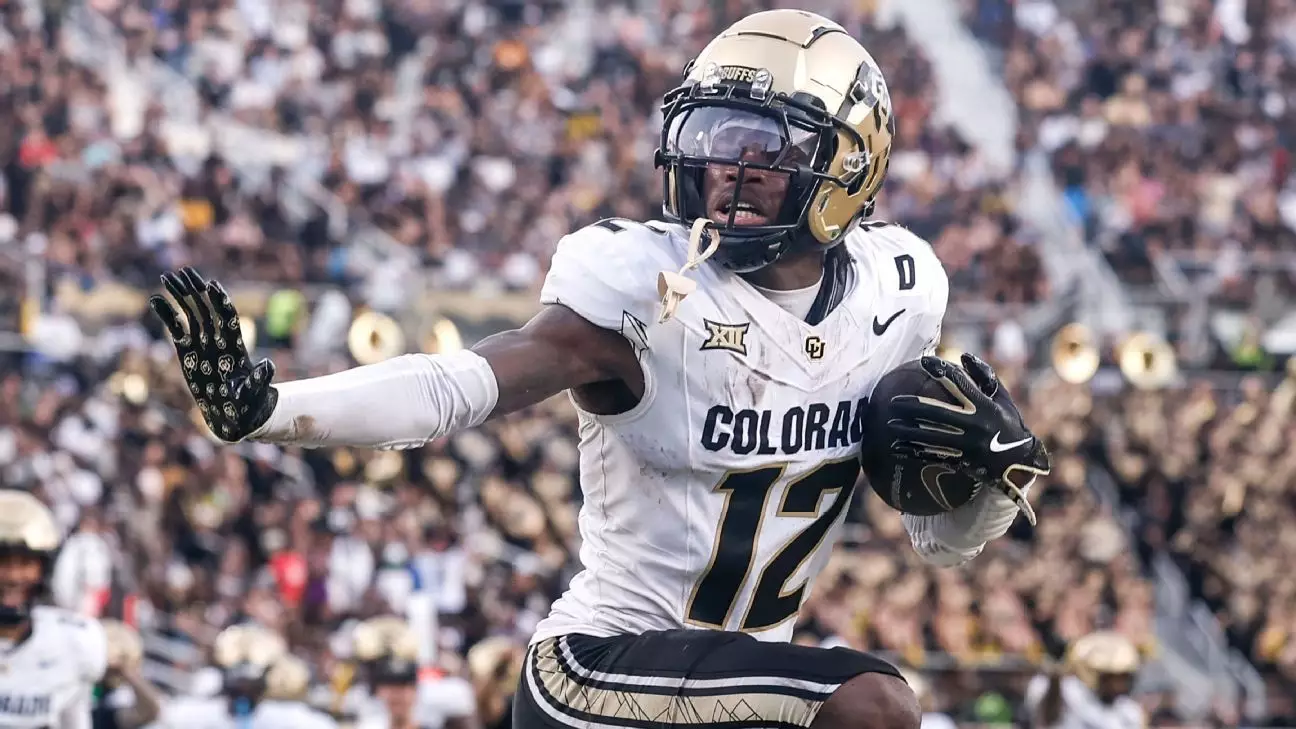As the NFL Draft approaches, one name resonates louder than the others: Travis Hunter. The standout two-way player from Colorado is making headlines not just for his remarkable skills, but also for his bold aspirations to fulfill dual roles in the NFL. Officials within the New York Giants organization, including General Manager Joe Schoen, acknowledge Hunter’s unique potential to thrive as both a cornerback and a wide receiver. In a league that often pigeonholes players into one position, Hunter’s case exemplifies the ongoing evolution of football roles, where versatility can be a game-changer.
Hunter’s insistence on playing both sides of the ball reflects a deeper passion for the sport. He’s not looking to simply be an option; he wants to dominate. “If a team limits me, it’s like never playing football again,” he expressed. Such fervor reveals not just his love for the game, but also an athlete who feels his worth transcends conventional expectations. The instinct to train in multiple capacities may very well allow Hunter to adapt quickly to the unpredictable nature of professional football.
Opportunities in New York
The New York Giants find themselves in a fortunate position with their roster, hosting three solid receivers and a functioning secondary. This depth offers the Giants the flexibility to experiment with Hunter’s multifaceted capabilities without the stress of an emergency gap in personnel. Schoen’s remarks about the team’s comfort level with their current roster suggest that they are open to innovative strategies—an environment where Hunter could potentially flourish.
However, replicating the demands of collegiate play—where a player might dominate in multiple roles—poses significant challenges in the NFL. The pros keep athletes to a different standard, where the complexities of offensive and defensive schemes are far more intricate. Schoen pointed out that the mental strain of mastering different systems is a considerable concern. His comments underscore the prevailing issue in today’s NFL: players must juggle high informational loads to be effective in multiple positions. This stressful balancing act will undoubtedly be at the forefront of any conversations surrounding Hunter’s fit within the Giants’ tactical framework.
The Decision-Making Dilemma
The Giants currently stand at a crossroads with their third overall draft pick, where their choice could reshape their franchise’s landscape for years to come. While Hunter’s talent is undeniable, must they forgo a potential franchise quarterback to select him? The NFL’s quarterback dilemma is infamous; teams driven by immediate success often overlook the long-term implications of their draft strategies.
Adding to this complexity is the strong possibility that the Cleveland Browns, holding the second pick, may select Hunter first. If the Giants want to secure this dual-threat player, they have to act quickly. Meanwhile, they must weigh their options carefully and evaluate whether the immediate need for a quarterback outweighs the potential of landing a generational talent like Hunter.
Interestingly, Hunter’s college teammate, Shedeur Sanders, is in the conversation as well, purportedly gaining traction with the Giants. The issue remains—should they gamble on a quarterback prospect or go all in on a versatile weapon? The stakes are undeniably high, as the franchise seeks not just to fill immediate gaps, but also to lay the groundwork for sustainable success.
A New Paradigm in Player Development
Hunter’s emergence is a reminder of the shifting paradigms in player development. Unlike decades past, when players were trained for singular roles, modern football recognizes the growing importance of adaptability. Hunter’s case is particularly compelling—not just for his dual-threat capability, but also for how it disrupts traditional player archetypes. Teams are increasingly recognizing that athletes who can toggle between offense and defense embody more than mere jack-of-all-trades; they represent a transformative approach to constructing rosters.
As Hunter prepares for the NFL Draft, his presence signals a possible evolution in how players are scouted and developed. A wave of dual-role athletes may soon emerge, driving teams to rethink strategies and exploit matchups dynamically. The pressure is on not just for Hunter to succeed, but for franchises to adapt their operational philosophies, embrace versatility, and seek out the next generation of players like him.
In a sport governed by specialization, Travis Hunter is a beacon of possibility, challenging preconceived notions and boundaries. His determination to thrive in both wide receiver and cornerback roles may very well chart new territory in the NFL, setting the stage for a future where versatility is not just an anomaly, but an expectation. How the Giants navigate this opportunity could define their identity and success for years to come.

